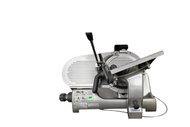Why Every Professional Kitchen Needs a Meat Slicer
In any professional kitchen, efficiency, precision, and consistency are crucial. One piece of commercial restaurant equipment that directly supports these goals is the meat slicer. Whether you're running a deli, a sandwich shop, a steakhouse, or even a catering business, investing in a quality meat slicer can drastically improve your operations. For many businesses in Texas, especially those sourcing from restaurant supply Fort Worth stores, meat slicers are an essential tool—especially when purchased as part of a smart investment in used restaurant equipment.
What Is a Meat Slicer?
A meat slicer, sometimes called a deli slicer, is a kitchen appliance used to slice meats and other products like cheeses and vegetables. Unlike a knife, a slicer allows for uniform thickness, cleaner cuts, and faster preparation, especially when dealing with large quantities.
There are two main types:
-
Manual slicers, where the operator pushes the food toward a rotating blade.
-
Automatic slicers, which move the carriage back and forth electronically, saving time and labor.
Most commercial models are electric and offer adjustable thickness settings, ensuring versatility in every cut.
Benefits of Using a Meat Slicer in a Commercial Kitchen
1. Speed and Efficiency
Manual slicing takes time and often leads to inconsistencies. A meat slicer allows you to process large amounts of meat in a fraction of the time, keeping up with customer demand during peak hours.
2. Consistency in Portions
Portion control is critical in the foodservice industry. A slicer ensures each cut is the same thickness, which not only looks professional but also helps control costs and ensures even cooking.
3. Versatility
Although called a “meat” slicer, this machine can handle cheeses, vegetables (like onions or lettuce), and even some types of bread. It’s a multi-functional piece of commercial restaurant equipment.
4. Labor Savings
A quality slicer, especially an automatic one, reduces the physical strain on kitchen staff. This helps with productivity and lowers the risk of repetitive motion injuries.
Who Needs a Meat Slicer?
1. Delis and Sandwich Shops
These businesses rely heavily on consistent, thin slices of meats and cheeses. A commercial-grade slicer is non-negotiable.
2. Restaurants and Diners
From prep work for burgers and steak sandwiches to plating charcuterie boards, meat slicers make it easy to work with cooked or cured meats.
3. Catering Companies
Caterers often deal with large events where speed and presentation are essential. Having a slicer makes mass prep more manageable and attractive.
4. Butcher Shops
Even in environments focused solely on raw meats, slicers provide clean, professional cuts that are difficult to achieve by hand.
Buying New vs. Used Restaurant Equipment
When equipping a kitchen, deciding between new and used restaurant equipment is a major financial consideration.
Advantages of Buying Used:
-
Cost savings of up to 50% or more.
-
Ability to invest in higher-quality brands that may be too expensive when new.
-
Immediate availability at local suppliers like those in restaurant supply Fort Worth stores.
However, it’s essential to inspect any used slicer for blade condition, motor performance, and sanitation. Reputable dealers will often clean, repair, and test used items before resale.
What to Look for in a Meat Slicer
When choosing a meat slicer, focus on the following factors:
1. Blade Size
Larger blades (12-14 inches) handle bigger products and are ideal for busy kitchens.
2. Horsepower
Higher horsepower ensures consistent cutting performance without overheating.
3. Safety Features
Look for models with blade guards, emergency shut-offs, and non-slip feet.
4. Ease of Cleaning
Many slicers can be disassembled for cleaning. Stainless steel components are easier to sanitize and more durable.
5. Durability
Choose units made of high-grade aluminum or stainless steel. These last longer and resist wear from daily use.
Maintenance and Care
To ensure your slicer lasts, follow these maintenance steps:
-
Clean the slicer after every use to prevent bacterial growth.
-
Sharpen the blade regularly to maintain cutting precision.
-
Lubricate moving parts as recommended by the manufacturer.
-
Inspect electrical components and replace worn parts promptly.
Common Brands and Models
Some trusted commercial slicer brands include:
-
Hobart – Known for top-tier build quality.
-
Globe – Popular in small to medium kitchens.
-
Berkel – Offers models that balance price and performance.
-
Avantco – A more affordable choice for budget-conscious operators.
Each of these brands offers models that are often available through used restaurant equipment dealers in restaurant supply Fort Worth locations.
Conclusion
A meat slicer is a cornerstone of many professional kitchens. It provides speed, precision, and uniformity—factors that directly affect food quality, customer satisfaction, and operational costs. Whether you’re buying new or browsing used restaurant equipment options from restaurant supply Fort Worth, make sure to invest in a slicer that meets your needs. It’s not just a purchase—it’s an upgrade for your entire operation.

